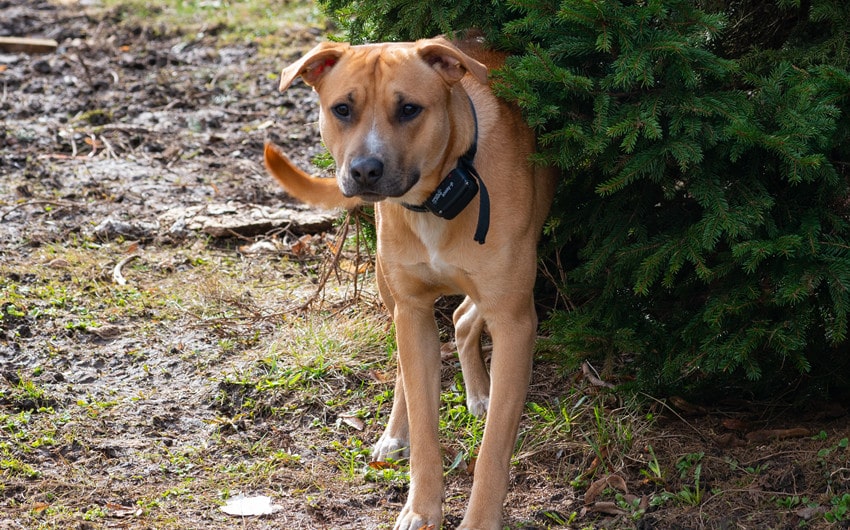Wireless dog fences provide a convenient solution for pet owners who need to manage their dog’s roaming area without the hassle of physical barriers. These systems use radio signals to create an invisible boundary that alerts your dog with a warning sound or mild static correction if they approach the edge. Ideal for various property sizes, wireless dog fences for large areas are particularly beneficial for expansive yards or open spaces. They are easy to set up, requiring no digging or the installation of physical posts.
Additionally, these fences are flexible, allowing you to adjust the boundary size and shape according to your needs. While they are effective for many dogs, it’s important to consider that their effectiveness can vary based on terrain and weather conditions. Overall, wireless dog fences offer a practical way to keep your dog safe and contained while giving them the freedom to explore.
Finding the Right Solution for Large Areas
Finding the right wireless dog fence for large areas involves several key considerations. Look for systems specifically designed to cover expansive spaces, as they offer broader signal ranges and more robust coverage. Ensure the system allows for customizable boundary settings to fit your property’s unique layout. Check for features like adjustable correction levels and reliable signal strength to handle varying terrains.
Additionally, read user reviews and seek recommendations to gauge performance and durability. Investing in a high-quality system that meets these criteria will help ensure your dog remains safely contained while enjoying ample space to roam.
Benefits of Wireless Dog Fences for Large Areas
Wireless dog fences offer several advantages for large areas:
- Extensive Coverage: Ideal for expansive properties, providing a broad signal range to cover more ground.
- Flexible Boundaries: Easily adjustable settings allow for customized boundary shapes and sizes to fit your specific terrain.
- No Physical Barriers: Eliminates the need for fences or gates, preserving the natural look of your property.
- Quick Installation: Simple setup without digging or complex installation processes.
- Enhanced Safety: Keeps pets contained while giving them the freedom to explore a large area.
These benefits make wireless dog fences an effective and convenient solution for managing pets in spacious environments.
Flexibility and Coverage
Wireless dog fences offer exceptional flexibility and coverage, especially in large areas. They allow for customizable boundary shapes and sizes to match your property’s layout. This adaptability ensures comprehensive coverage without physical barriers, enabling your pet to explore freely within a designated safe zone.
Ease of Installation
Wireless dog fences are easy to install, requiring no physical digging or construction. Simply set up the transmitter, define the boundary settings, and place the collar on your dog. This straightforward process ensures a quick and hassle-free installation, making it ideal for those who prefer minimal effort.
Safety Features
Safety features in wireless dog fences include adjustable correction levels and warning tones to train your pet effectively. Many systems offer consistent signal strength and robust performance to ensure reliability. These features work together to keep your dog safely within boundaries while allowing them to explore their surroundings.
Key Features to Consider
When choosing a wireless dog fence for large areas, consider these key features:
- Coverage Range: Ensure the system can cover the size of your property effectively.
- Adjustable Boundaries: Look for models that allow you to customize the boundary shape and size to fit your landscape.
- Signal Strength: Reliable signal strength is crucial for consistent performance and safety.
- Correction Levels: Adjustable correction levels help tailor training to your dog’s needs.
- Durability: Choose a system with robust components to withstand various weather conditions.
- Ease of Setup: Opt for a system that is simple to install and configure.
These features will help ensure that the wireless fence meets your needs and keeps your pet safe.
Range and Coverage
Range and coverage are crucial factors in selecting a wireless dog fence for large areas. Ensure the system provides an adequate signal range to encompass your entire property. Look for models specifically designed for extensive coverage to avoid dead zones where the signal may falter. Systems with adjustable range settings allow you to fine-tune the coverage to match your yard’s size and layout.
Reliable coverage ensures your dog remains within the designated boundary without straying into unsafe areas. Assess the manufacturer’s specifications and user reviews to confirm that the system offers the necessary range and effective coverage for your specific needs.
Battery Life and Power Options
Battery life and power options are essential considerations for wireless dog fences. Look for systems with long-lasting batteries to reduce the frequency of replacements or recharges. Many models offer rechargeable collars, which can be more convenient and cost-effective.
Additionally, some systems provide low-battery indicators to ensure timely charging. For the transmitter, check if it supports reliable power sources or has backup options to maintain functionality during outages. Prioritize models with efficient power management features to ensure continuous operation and minimal interruptions. Assessing these aspects helps ensure the fence remains effective and your pet stays safe without frequent maintenance.
Durability and Weather Resistance
Durability and weather resistance are vital for the longevity and effectiveness of a wireless dog fence. Choose systems designed with rugged components that can withstand various environmental conditions. Collars should be waterproof and resistant to dirt, ensuring they function reliably in rain or snow. The transmitter should also be weatherproof to avoid damage from exposure to the elements.
Look for models with robust construction and high-quality materials to handle wear and tear. Assess user reviews and product specifications for insights into a system’s resilience. Investing in a durable, weather-resistant fence ensures consistent performance and an extended lifespan, keeping your pet secure year-round.
Installation and Maintenance Tips
Proper installation and maintenance are key to ensuring the effectiveness of your wireless dog fence. Begin by carefully reading the manufacturer’s instructions for setup. Place the transmitter in a central location to maximize signal coverage and minimize interference. When configuring the boundary, take time to adjust the settings according to your property’s layout and your pet’s needs. Test the system thoroughly to ensure the signal covers the entire designated area without dead spots.
For maintenance, regularly check the battery levels of both the transmitter and collar to prevent outages. Clean the collar periodically to remove dirt and ensure optimal performance. Inspect the system for any signs of wear or damage, especially after severe weather. Regularly reviewing and recalibrating the boundary settings can help you adapt to changes in your property or pet’s behavior. Following these tips will help keep your wireless dog fence functioning effectively and your pet safe.
Routine Maintenance
To ensure your wireless dog fence operates smoothly, perform regular checks on the system. Inspect the transmitter and collar for any signs of wear or damage, and clean them as needed to prevent dirt buildup. Monitor battery levels and recharge or replace them according to the manufacturer’s recommendations.
Regularly test the system to confirm the signal covers the entire designated area without dead spots. Additionally, adjust the boundary settings if there are changes in your property or your pet’s behavior. Keeping up with these maintenance tasks helps ensure reliable performance and prolongs the lifespan of your wireless dog fence.
Troubleshooting Common Issues
When troubleshooting common issues with your wireless dog fence, start by checking the power sources for both the transmitter and collar to ensure they are functioning correctly. If the signal is inconsistent, verify that the transmitter is placed centrally and away from potential sources of interference like metal objects or electronic devices. Inspect the collar for any damage and ensure it is properly fitted.
If the system fails to activate the correction, adjust the sensitivity settings or replace the collar’s battery. Consult the user manual for specific issues and consider reaching out to customer support if problems persist.
Boundary Adjustment Problems
Boundary adjustment problems with wireless dog fences can arise if the system fails to create a consistent or accurate perimeter. If the boundary is too large or too small, start by recalibrating the transmitter according to the manufacturer’s instructions. Ensure the transmitter is centrally located and free from obstructions that could affect the signal. If the boundary is inconsistent, check for potential sources of interference, such as metal structures or electronic devices, and relocate the transmitter if necessary.
Additionally, verify that the collar is properly fitted and functioning, as a poorly adjusted collar can affect boundary detection. Regularly test the boundary settings and make incremental adjustments until the desired perimeter is achieved. If issues persist, consult the user manual or contact customer support for further assistance to ensure your wireless dog fence provides a reliable and accurate containment area.
Conclusion
In summary, wireless dog fences for large areas offer a flexible and efficient solution for managing extensive properties. By considering key features like range, battery life, and durability, you can select a system that meets your needs. Regular maintenance and troubleshooting ensure reliable performance, keeping your pet safe and contained. Choosing the right wireless fence enhances both convenience and safety for your pet’s outdoor adventures.







